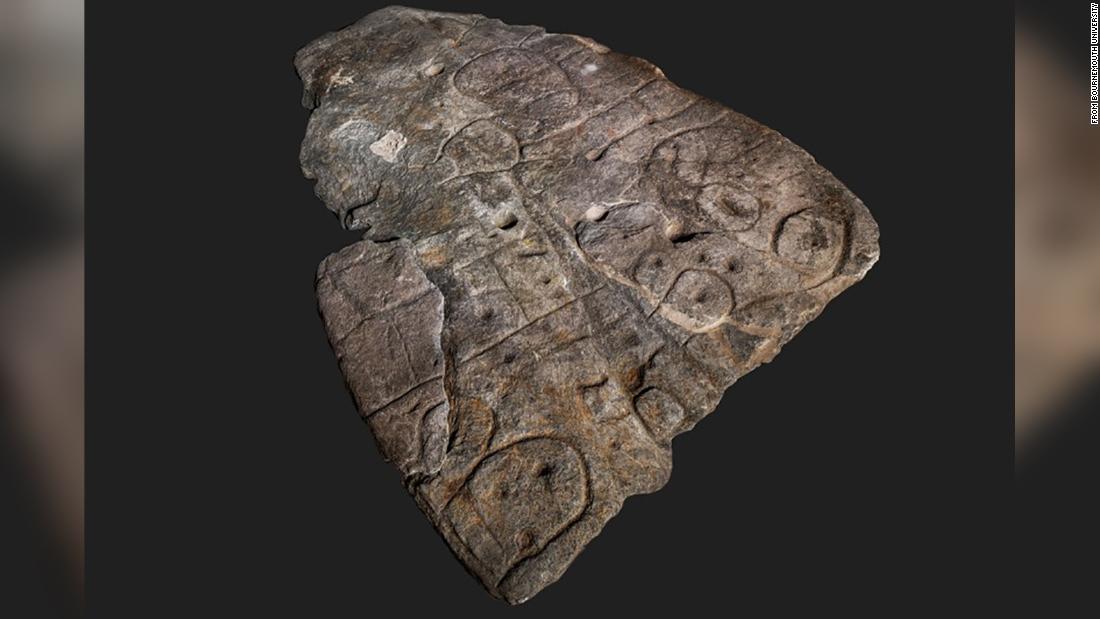
Using high-resolution 3D soundings and photogrammetry, the researchers re-examined the Saint-Bélec plate – a piece of engraved and partially broken stone that was discovered in 1900 but forgotten for nearly a century.
Researchers at the French National Institute for Preventive Archaeological Research (Inrap), the University of Bournemouth in the UK, the French National Center for Scientific Research (CNRS) and the University of West Brittany say a recent study of the stone showed the oldest cartographic representation a well-known territory in Europe.

The researchers noticed that the topography of the plate resembled a valley, with lines representing a river network.
From Bournemouth University
The plaque, which boasts intricate sculptures and scattered motifs, had a crowded life: unearthed from a burial mound in western Brittany, it is believed to have been reused in an ancient burial in the late Bronze Age (between 1900 and 1640 ECB), experts say, where he formed a wall from a small box, resembling a coffin, containing human remains. At the time of the excavation, the 12.7-meter-long plate was already broken and the upper half was missing.
In 1900, it was moved to a private museum, and until the 1990s, it was deposited in the National Museum of Archeology in the castle of Saint-Germain-en-Laye, in a niche in the moat of the castle. In 2014, it was rediscovered in one of the museum’s cellars.
When studying the rediscovered plaque, the researchers found that the sculptures resembled a map, with repeated motifs joined by lines.
They noticed that its surface was deliberately 3D shaped to represent a valley, with stone lines believed to be a river network.
The team noticed similarities between the engravings and landscape elements in western Brittany, the territory represented on the slab seems to show a region of about 19 miles by 13 miles, along the course of the river Odet.
Clément Nicolas, a postdoctoral researcher at the University of Bournemouth and the first author of the study, told CNN that the discovery “highlights the cartographic knowledge of prehistoric societies.”
But there are still many unknowns, including why the plate was broken in the first place.
“Slabul Saint-Bélec describes the territory of a highly hierarchical political entity that strictly controlled a territory in the early Bronze Age, and its rupture could have indicated condemnation and deconsecration,” Nicolas said.